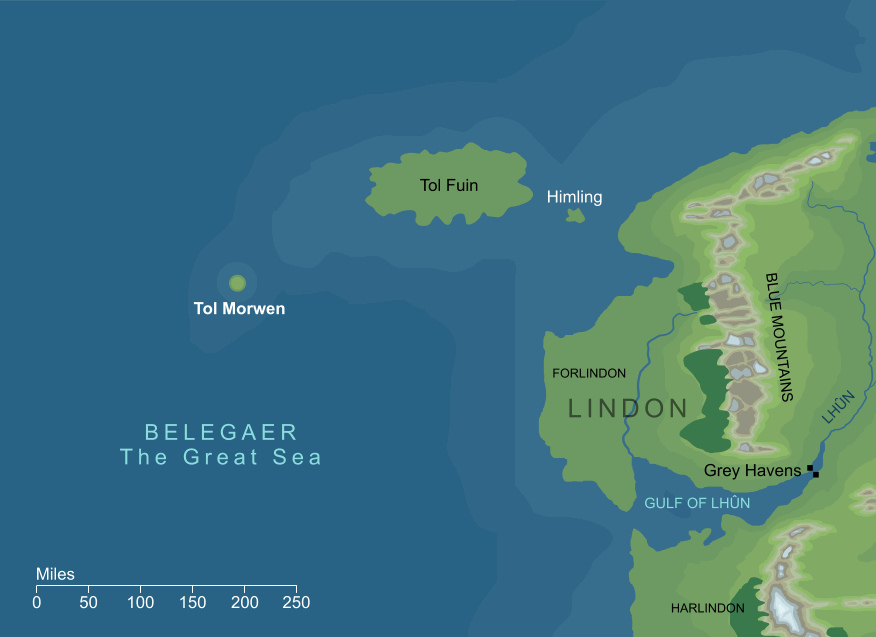
The islands west of
Lindon, including Tol
Morwen (somewhat speculative)
1
The islands west of
Lindon, including Tol
Morwen (somewhat speculative)
1It was on the brink of Cabed Naeramarth above the Ravines of Teiglin that Túrin slew the Dragon Glaurung, and afterwards a tragedy unfolded that saw both Túrin and his sister Niënor each take their own lives. Túrin was entombed in a high mound near where he had fallen, and a tall grave marker was placed there inscribed with his name and that of Niënor (though Niënor had cast herself into the river and was lost).
Morwen, the mother of Túrin and Niënor, searching for her children, found only the mound with its memorial stone. There she was in turn found by her husband Húrin, but she had come to the end of her strength and died on the mound. Húrin buried her beside the grey stone and carved her name beneath those of her children.
That stone became known as the Stone of the Hapless, and it was tended by the people of Brethil, who laid flowers there in spring and berries in autumn. A seer named Glirhuin made a prophecy that the stone would stand for all time, and this prophecy would later come to pass. Just a few decades after it the stone was raised, the War of Wrath devastated the lands of Beleriand, but the mound and its stone somehow2 survived as a lone island among the inrushing seas. From that time it was known as Tol Morwen, the Isle of Morwen, in memory of the mother of the Children of Húrin.
Notes
1 |
No final map exists of the isles beyond Himling. The map shown above is based on a rough sketch map reproduced in volume VII of The History of Middle-earth, superimposed on the known geography of Beleriand during the First Age.
|
2 |
We're not told how the grave mound survived the cataclysm that ended the First Age. Though it was a high mound, it would hardly have been higher than the surrounding hills (Amon Obel in the forest to the north, for example, or Amon Rûdh nearby to the south) and yet these do not seem to have survived as islands - indeed, we're explicitly told that 'Tol Morwen stands alone' (Quenta Silmarillion 22, Of the Ruin of Doriath). The implication appears to be that Glirhuin's prophecy was fulfilled through means that were not entirely natural - presumably through the intervention of the Valar - though this is never stated outright.
|
Indexes:
About this entry:
- Updated 28 June 2013
- This entry is complete
For acknowledgements and references, see the Disclaimer & Bibliography page.
Original content © copyright Mark Fisher 1998, 2001, 2011, 2013. All rights reserved. For conditions of reuse, see the Site FAQ.

